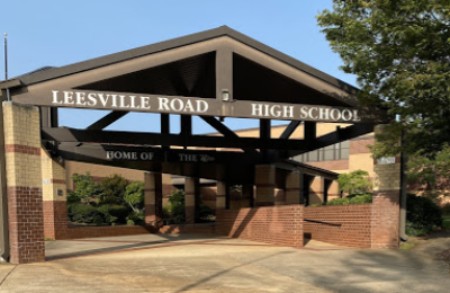Leesville teachers are learning how to properly adjust to remote learning for the first nine weeks of the 2020-2021 school year.
Staff are trying to plan their tests, quizzes, and assignments around the remote learning schedule:
- Period one: 7:30AM – 8:40 AM
- Period two: 8:45 – 9:55 AM
- Period three : 10 – 11:10 AM
- Lunch: 11:10AM – 1:10 PM
- Period four: 1:10 – 2:20 PM
Teachers need at least 40 minutes of live instruction with their students on Google Meet known as synchronous time. Within this time frame, teachers are able to interact with their students in order to simulate being in an actual classroom.
After those 40 minutes, students have asynchronous time until the class period is over. During this time, students will have the chance to work on assignments that were given by their teachers. They will either work individually, or teachers may create multiple groups called breakout groups which will allow their students to work with their peers.
Even though teachers received an organized schedule, most teachers know that things don’t always go as planned.
The Virtual Environment
Mrs. Rogers is entering her second year teaching at Leesville in the Social Studies department. She argues that with this new schedule, she feels like she doesn’t have enough time to get through her curriculum.
“There just isn’t enough time in the day. To grade, to plan, to breathe, there just isn’t enough time,” she said via email.
On top of her stress with time, learning how to operate Google Classroom was an obstacle — it’s the main learning management system teachers have been using for their classes. She has grown to enjoy using this particular program, so her remote learning journey can run a little smoother.
“I have had to learn how to use Google Classroom, which I have not done before. I kind of like it!” she stated.
Mrs. Anderson, an English teacher at Leesville, uses Google Classroom as well. However, she admits that it has been hard for grading and planning lessons.
“I’m having to modify all my lesson plans for a virtual environment and that’s very time consuming” Mrs. Anderson said via email. “Additionally, I’ve got larger than usual classes, so grading takes time.”
Student Engagement
Adding onto the effects of online learning, Mrs. Anderson believes that live instruction is not the same as it would be if they were in their own classroom.
“There’s an energy a teacher gets from being in the same room with her students that virtual learning just doesn’t have,” said Mrs. Anderson.
During live instruction students are not required to turn their cameras on, but Mrs. Rogers agrees that turning on your camera is helpful, and keeps students engaged.
“Even just seeing student’s faces makes the world of a difference. I can see if there is confusion on their face, frustration, or if they are involuntarily nodding along in understanding,” she said.
On the other hand, Mrs. Anderson teaches AP classes, in which she believes that most of her students are “engaged and conscientious,” so she does not have trouble in that department.
This allows her to receive feedback from her students as well as guidance when it comes to looking out for problems within their online assignments.
“Although things don’t always go as planned during live lessons, I’ve learned from any missteps,” Mrs. Anderson mentioned. “I’ve relied on students to help troubleshoot problems with me and I’ve found that to be very helpful.”
Unfortunately, teachers don’t know when they are returning back to their classrooms, but most Leesville teachers can agree in the words of Mrs. Rogers: “Online learning is not my favorite, I miss being in the classroom with students.”

Hi! My name is Kyla, and I am a senior editor for The Mycenaean. I am the secretary for Senior Class Council and also the editor-in-chief for Leesville’s literary magazine

Leave a Reply